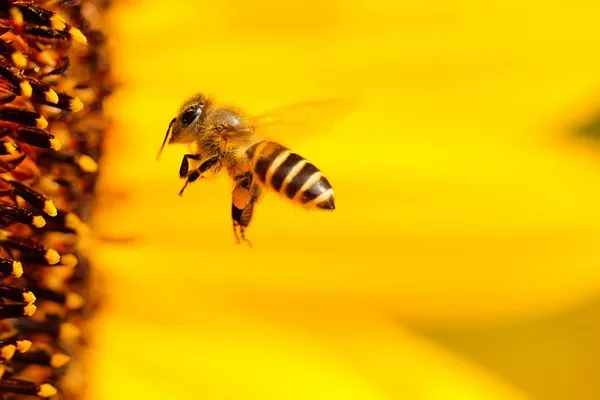The intricate dance between flowers and bees has been a cornerstone of ecological balance for centuries. Bees, the diligent pollinators essential for the reproduction of countless plant species, play a crucial role in maintaining biodiversity. Understanding the floral preferences of bees is not only fascinating but also vital for preserving the delicate tapestry of our ecosystems. In this article, we delve into the world of flowers, exploring the varieties that bees find most irresistible.
Blooms in the Blue Spectrum:
Bees are drawn to flowers in the blue spectrum, as these hues are most visible to them. Among the favorites are the enchanting Blue Salvia and delicate Blue Hydrangea. These flowers not only offer a visual feast for bees but also provide nectar and pollen, essential for the bees’ survival. Planting blue-flowered species in your garden or green space can act as a beckoning call to these pollinators.
Sunflowers: A Beacon of Nectar and Pollen:
Sunflowers (Helianthus) stand tall as one of the most bee-friendly flowers. Their large, vibrant blooms offer copious amounts of both nectar and pollen, making them a haven for bees. The iconic golden petals surrounding the central disc create a landing pad for bees to collect the nourishment they need. Planting sunflowers not only adds a touch of sunshine to your garden but also contributes to the well-being of local bee populations.
Lavender’s Fragrant Allure:
Lavender, renowned for its soothing fragrance and distinctive color, is a magnet for bees. Bees are particularly fond of the sweet nectar produced by lavender blooms. This aromatic herb not only appeals to our senses but also provides bees with a rich source of food. Placing lavender strategically in your garden can create a haven for these industrious pollinators while adding a touch of elegance to your outdoor space.
Coneflowers: A Perennial Pleasure for Bees:
Coneflowers, scientifically known as Echinacea, are not only a popular choice among gardeners but also a favorite among bees. These hardy perennials produce eye-catching daisy-like flowers that boast a central cone surrounded by colorful petals. Bees are attracted to the nectar and pollen nestled within the cone, making coneflowers a reliable and enduring source of sustenance for these vital pollinators.
Delightful Daisies:
Daisies, with their simple yet charming appearance, are another group of flowers that bees find irresistible. Whether it’s the classic Oxeye Daisy or the vibrant Shasta Daisy, these blooms provide bees with both nectar and pollen. The flat, open structure of daisy flowers makes them easily accessible to bees, encouraging frequent visits. Including daisies in your garden not only adds a touch of whimsy but also supports the well-being of local bee populations.
Bee Balm: A Nectar-Rich Oasis:
True to its name, Bee Balm (Monarda) is a flower that bees absolutely adore. Also known as Bergamot, this vibrant bloom boasts a cluster of tubular flowers that are a rich source of nectar. The aromatic oils present in Bee Balm add an extra layer of attraction for bees. Planting Bee Balm in your garden not only provides a visual spectacle but also ensures a continuous supply of nectar for the diligent pollinators.
Butterfly Bush: A Haven for Bees:
Despite its name, the Butterfly Bush (Buddleja) is a haven not just for butterflies but also for bees. This shrub produces long, cone-shaped clusters of flowers that are a favorite among various pollinators. The abundance of nectar in Butterfly Bush flowers makes them a popular pitstop for bees seeking sustenance. Integrating this bush into your garden can transform it into a bustling hub of pollinator activity.
See Also What Flower Symbolizes Healing? All You Need to Know
Conclusion:
In the intricate tapestry of nature, the relationship between flowers and bees is a harmonious dance that sustains life on Earth. By understanding the floral preferences of bees, we can contribute to the preservation of these vital pollinators and, in turn, the ecosystems that rely on them. Planting a diverse array of bee-friendly flowers, from the enchanting Blue Salvia to the classic Sunflower, not only enhances the beauty of our surroundings but also plays a role in supporting the delicate balance of nature. As stewards of the environment, let us embrace the responsibility of cultivating spaces that are not just aesthetically pleasing but also nurturing for the tireless pollinators that share our world.


